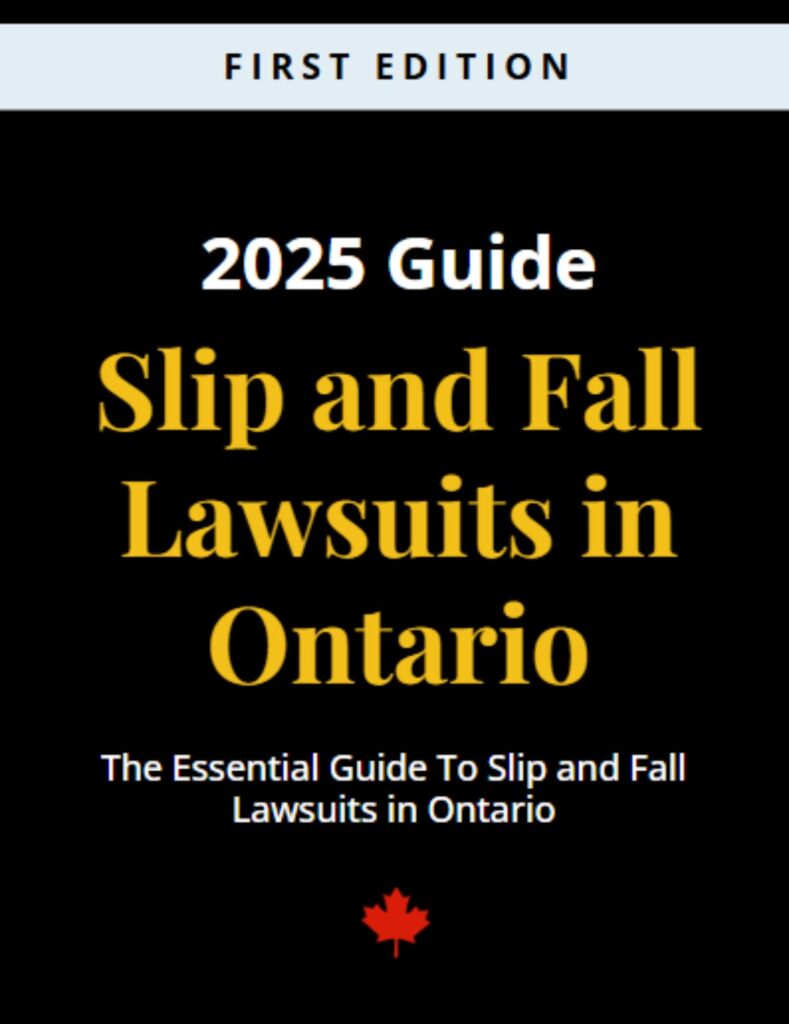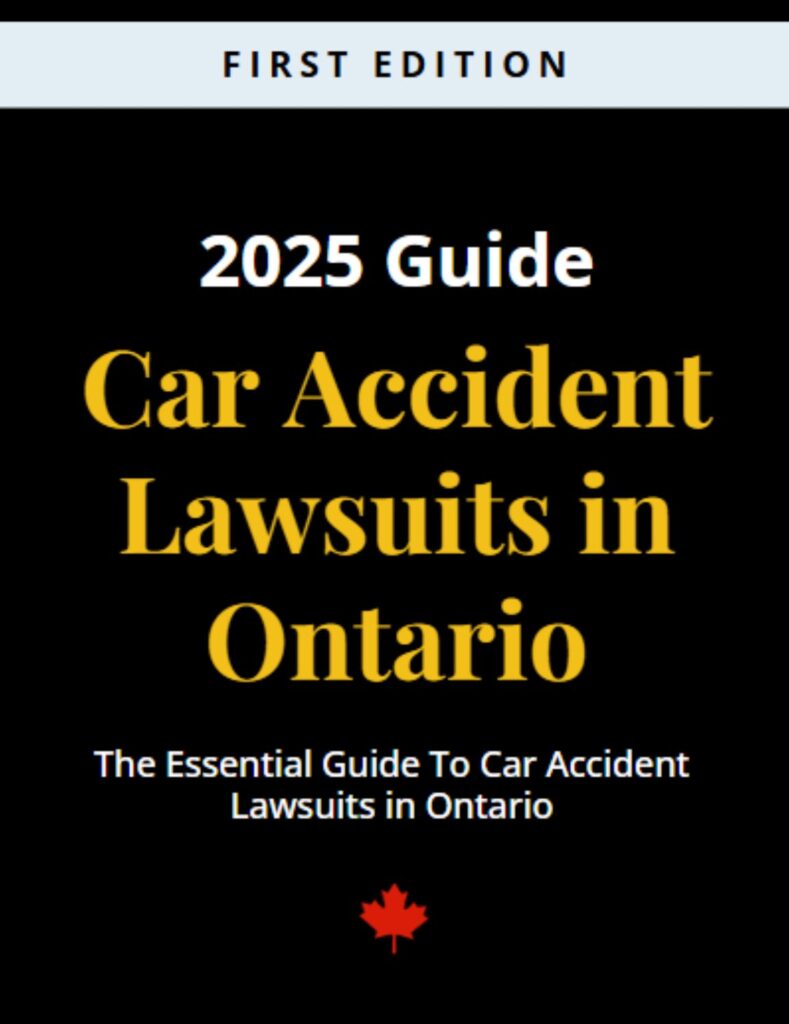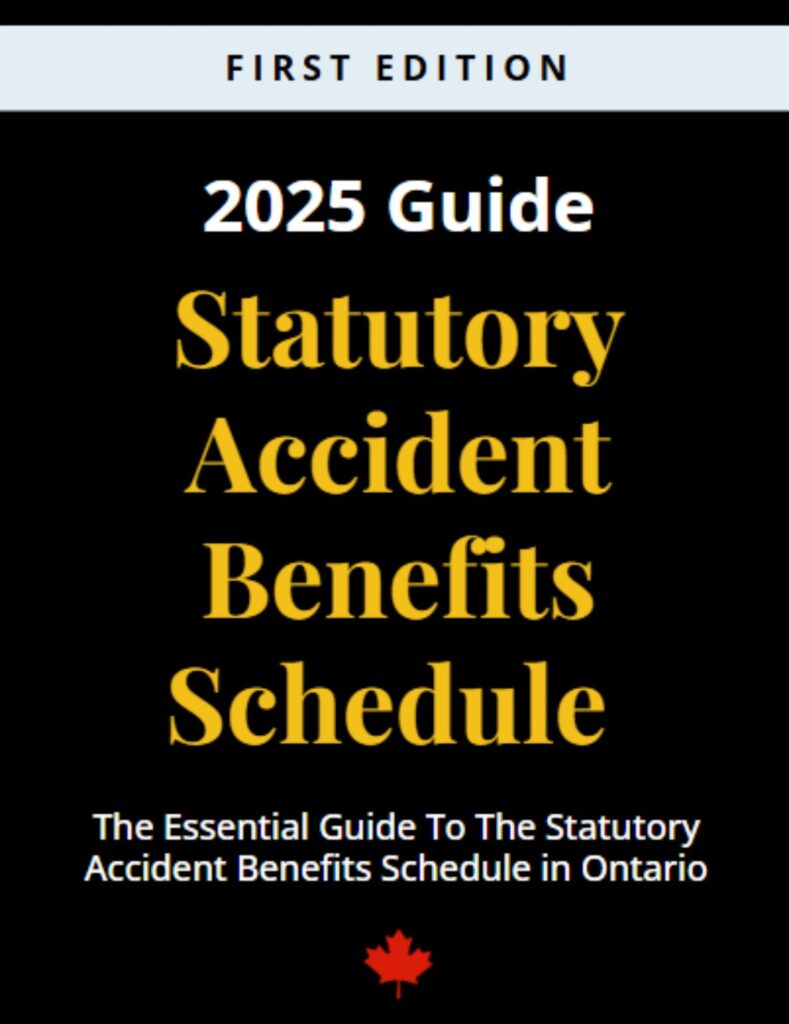Thunder Bay Internal Bleeding Lawyer
Find out if you have a case today.
Contact our Thunder Bay personal injury lawyers for a free consultation if you have legal questions regarding your personal injury claim.
Table of Contents
No one expects to be in a car accident, but when it does happen, the people involved in the accident can have injuries that result in internal bleeding. This can cause excruciating pain and be expensive to repair. If you have suffered from internal bleeding injuries due to the negligence of another person, you may have legal options.
Internal Bleeding Causes
In most situations, internal bleeding is caused by an impact to the body. The amount of force can determine how severe the injuries are.
- Blunt Trauma – Blunt force trauma will always result in injuries outside of the body, but it will not always cause enough damage to the inside to cause bleeding. However, if enough force is applied, internal bleeding can occur. An organ can be torn, causing blood to flow inside the body where it should not be.
- Deceleration Trauma – This type of trauma can result in organs shifting inside the body. This can cause blood vessels to be torn away from organs, causing bleeding. This type of trauma is often the cause of intracranial bleeding. Force to the head can result in deceleration or acceleration trauma, which results in the brain moving inside the skull and small veins near the surface of the brain tearing. Even a small amount of bleeding in the brain can increase the pressure in the skull and decrease brain functions.
- Bone Fractures – Broken bones may result in internal bleeding. Bones have bone marrow inside, which is used in blood production; therefore, a large amount of blood loss can occur when a bone is broken. There are also a lot of blood vessels that surround bones, and if the bone is broken, it can tear these vessels, causing massive internal bleeding.
LET US PUT OUR EXPERTISE TO WORK FOR YOU
Tell Us What Happened
Since 1959, we’ve helped thousands of Canadians get the compensation they deserve with their personal injury claims. One of Canada’s oldest personal injury law firms, personal injury law is exclusively what we do. Book a free consultation today with our top-rated personal injury lawyers.
Our team is available 24/7 to speak with you.

Internal Bleeding Symptoms
Because internal bleeding commonly happens in car accidents, it is important to know the symptoms and signs of these injuries. In some situations, however, it can take several days for symptoms of these injuries to appear.
Depending on the location of the injury and how much blood loss has occurred, the symptoms of internal bleeding can vary. Here are a few of the symptoms of internal bleeding that you should be aware of:
- Intracranial Bleeding – This type of bleeding may result in altered mental functioning, weakness, vision loss, or strokes. The longer the bleeding inside goes undetected and the worse the bleeding is, the easier the symptoms are to recognize.
- Intra-abdominal Bleeding – These symptoms are often hidden and only detected if there is pain. If the victim of the injury suffers enough blood loss, he or she may experience lightheadedness, shock, shortness of breath, and low blood pressure.
If you suspect you or someone around you has an internal injury, you should seek medical attention as quickly as possible. The longer internal bleeding injury goes untreated, the more severe the complications can be. These injuries can even result in death.
Diagnosis And Treatment
If your doctor suspects that you may be suffering from internal bleeding, they may order imaging tests to find the source of the bleeding. These tests can be extensive. The most common types of these tests include the following:
- Fibre optic scopes are used to look in the stomach, esophagus, or colon to check for gastrointestinal bleeding. If the doctor is able to find the source of the bleeding, they may be able to use electricity to cauterize the injury that is bleeding.
- CT scans are most commonly used when bleeding is suspected in the brain. This test can also identify fractures of the skull and brain swelling.
- Ultrasounds are a type of test that can be used to look for bleeding in the abdomen.
- Angiography testing may be ordered to evaluate the flow of arterial blood if the doctor believes the bleeding could be the result of a damaged artery.
The proper treatment for these injuries will depend on where the bleeding is taking place, how stable the patient is, how much blood is being lost, and other factors.
Can Internal Bleeding Go Away On Its Own?
Some types of internal bleeding are more serious than others. For example, internal bleeding that is coming from a soft tissue surrounding a broken bone will require monitoring, but will likely heal on its own after the bone is set. Brain bleeding or bleeding around other vital organs is typically an emergency situation and is not likely to heal on their own.
If you think you may be suffering from internal bleeding, you need to seek medical attention immediately. Internal bleeding cannot be diagnosed on your own. You must seek emergency room treatment so doctors can order tests with proper medical equipment to diagnose you.
What If Internal Bleeding Goes Unaddressed?
If left unaddressed, internal bleeding can result in death. If you survive internal bleeding, complications may include anemia, neuropathy, organ failure, shock, paralysis, brain injury, and coma. Depending on how severe the wound is and where it is located, the symptoms may happen immediately after the trauma occurs, or present more slowly over a period of time. Once doctors are able to find the source of the bleeding, physicians can closely watch any internal bleeding, reduce any pressure inside and decrease damage to the organs, and provide fluids to replace those lost as needed. In severe cases, a patient may need surgery to make the bleeding stop and protect his or her organs.
Internal bleeding should always be considered a medical emergency. Be sure when you seek medical care you tell the doctor about any medical conditions you have and what medications you take. Both of these can play a role in the seriousness and treatment needed for internal bleeding injuries.
Contact Preszler Injury Lawyers Today
Depending on how severe the internal bleeding was, this type of injury can cause organ failure, coma, strokes, and even death. If you or your loved one suffered internal bleeding injuries due to the negligence of another driver, you need to contact an experienced personal injury lawyer. Preszler Injury Lawyers has years of experience helping our clients get the compensation that they deserve. Contact us today to schedule a consultation.
More Thunder Bay Practice Areas
Proudly Canadian
Award Winning Personal Injury Law Firm
We are proud to be one of Canada’s oldest and long-standing personal injury law firms. Since 1959, we have been providing exceptional legal services and have established ourselves as leading personal injury lawyers in the Canadian legal community. It’s not just the awards that recognize our achievements, but also the wins we’ve achieved for thousands of Canadians with their personal injury claims.



More personal injury Topics
Here’s more information on personal injury related topics that we think you might find helpful.

personal injury
|
January 23, 2024
Injured as a Worker in Ontario? A WSIB Claim Isn’t Necessarily Your Best— Or Only— Option
In Ontario, the compensation of workers who sustain injuries or illnesses in the course of their employment is governed by the Workplace Safety and Insurance…

personal injury
|
December 7, 2023
Does a Child Have the Right to Sue for Personal Injury?
As much as parents and guardians do everything they can to keep children safe and protected from dangerous situations, there are occasions when a child…

personal injury
|
October 10, 2023
Gain Peace of Mind Through a Structured Settlement
The phrase “structure binds anxiety” is often used by psychologists to help people suffering from anxious feelings and intrusive thoughts. This maxim’s aim is to…
More personal injury Video Resources
We also have some videos on the topic of personal injury claims
personal injury FAQs
Here are some commonly asked questions for personal injury claims
What does a lawsuit look like?
Every personal injury lawsuit is generally comprised of five main parts. The length of time each part takes can vary depending on the complexity of your case. Your lawyer will help you through each stage by providing tailored advice and strong legal representation.
You can expect:
- Statement of Claim: This is a formal document that initiates the personal injury claim against the at-fault party (or individual you are suing).
- Examination for Discovery: This is a meeting where you and your lawyer will ask the opposing party questions about the claim, the accident, fault, and anything else that is deemed relevant. The opposing party will also have the opportunity to ask you questions.
- Gathering of Evidence: Your legal team will gather a variety of evidence on your behalf to strengthen your claim. This might include medical records, police reports, images from the accident scene, witness testimony, expert opinions, and more.
- Mediation: If you would like to attempt to settle without going to trial, you will likely undertake mediation. Mediation involves you and the opposing party negotiating the terms of your settlement with the assistance of a neutral third party.
- Trial: If you are unable to reach a settlement during mediation, your claim will proceed to trial. During trial, your lawyer will present your case and the evidence they have gathered before a judge (and sometimes a jury). Once complete, the judge will decide the final amount of compensation you’re entitled to.
It’s important to note that a majority of personal injury claims are settled through mediation, out of court. Our Toronto personal injury lawyers help guide clients through each of these stages, so they don’t have to navigate the legal complexities alone.
How much will I have to pay for lawyers’ fees?
Our personal injury lawyers work on a contingency-fee basis, meaning we only get paid if you win your case. A percentage of the settlement you receive will go towards lawyers’ fees. There are no upfront, out-of-pocket payments required.
What type of compensation can I expect to get?
When you’re injured in an accident due to someone else’s negligence, there are many different types of compensation you may be eligible to receive. The amount and kind will depend on the severity of your injury and the specifics of your case.
Common damages you might claim include:
- Pain and suffering
- Out-of-pocket expenses
- Loss of income
- Housekeeping losses
- Medical costs
- Legal costs
- And more
Our experienced Toronto personal injury attorneys will help maximize what you can recover by exploring your case and eligibility in depth. We aim to ensure that the compensation you receive reflects not only your current suffering, but the lifelong effects that your accident may have in the future.
When can I sue for non-pecuniary general damages (e.g. pain and suffering, loss of enjoyment of life, etc.)?
In Ontario, you can sue for non-pecuniary damages if you have suffered a permanent and serious impairment of an important physical, mental, or psychological function, or permanent, serious disfigurement. This is known as the “threshold.” If you meet this threshold, you can sue for general damages such as pain and suffering, loss of enjoyment of life, and other similar losses.
How long will it take to settle my case?
The length of time it takes to settle a case depends on several factors, including the complexity of the case, the extent of your injuries, and whether the other parties involved are willing to settle. Some cases can be settled in a few months, while others can take years.
How long will the process take?
The length of time a personal injury claim can take varies widely according to the specifics of your case. While some cases settle in a matter of months, some can take anywhere from two to four years.
Some factors that affect the duration of personal injury claims include:
- Complexity of your injuries
- Each party’s willingness to settle
- Whether a claim goes to court
- Insurance company cooperation
- Availability of evidence
- And more
When liability is clear or injuries/damages are more clearly documented, cases may move faster. A personal injury lawyer will make sure the process keeps moving, although sometimes delays (like court backlogs) are unavoidable. Seeking personal injury legal advice early may help you streamline your timeline.
How long do I have to sue?
In Ontario, generally speaking you have two years from the date of your injury-causing accident to file a claim. However, based on the circumstances of your individual case, this timeline could be subject to additional limitations.
Do I have a strong case?
After taking advantage of a free initial consultation with our personal injury lawyers, the strength of your case can be evaluated based on the evidence available and the specific circumstances of your accident. Our personal injury lawyers offer case-specific legal feedback to help you understand the strengths and weaknesses of your case and advise you on legal options that might be available.
Got more questions?
If you have more questions or need legal help regarding personal injury claims, contact our legal team for help.
We’re happy to help.
INJURED IN AN ACCIDENT IN Thunder Bay?
Book a FREE Consultation
With Our Legal Team Today
Our phone lines are available 24/7
During your free consultation you will find out if you have a case worth pursuing as well as answers to any legal questions you may have.



